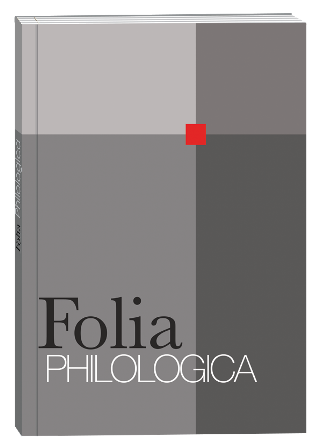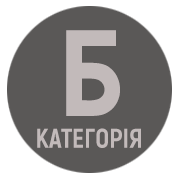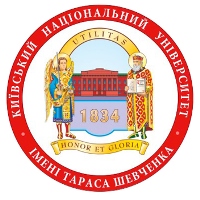EPIGRAPH AS A MANIPULATIVE ELEMENT OF THE NARRATIVE TECHNIQUE OF MODERN FRENCH WOMEN’S PROSE
DOI:
https://doi.org/10.17721/folia.philologica/2022/3/4Keywords:
epigraph, artistic narrative, narrative technique, manipulation, French women’s proseAbstract
The proposed article focuses on the study of the literary narrative of modern French prose. Namely, the article examined epigraphs in detail as structural elements of narratives of women’s prose, which acquire manipulative characteristics and influence the construction of the corresponding narratives. The research has reviewed the narrative spaces of modern French writers artists, namely T. de Rosney and A.-M. Lugan. For the first time, the manipulative functions of individual structural elements of the artistic space, which influence not only the organization of the narrative, but also the narrative technique of modern women’s prose, were revealed on the material of the works of French authors in the course of narratological research. This article has outlined the main paradigms of poetics. Special focus is laid on the analysis of the literary narrative spaces theory, the research on manipulative influence, in particular, speech manipulation. Narrative techniques of novels by French writers T. de Rosney and A.-M. Lugan are characterized and described. The formulated features of epigraphs as structural elements of the narrative space are focused on the manipulative influence that these compositional positions of the organization of the literary narrative receive. The research revealed that female writers gravitate towards certain narrative techniques. So, for example, the works of T. de Rosney belong to the heterodiegetic type of narration, while A.-M. Lugan tries to create in the form of homodiegetic type. Such differentiation can be explained by the personal worldview of these writers, since one of them (A.-M. Lugan) worked as a psychologist for a long time, which led to the choice of the narrative technique (from the first person, focused on the outside). In accordance with the type of narrative, epigraphs for each of the novels were also chosen. So, for the heterodiegetic narrative type, epigraphs represent famous people's quotes, which implicitly indicate the plot and structure of the corresponding narrative space. Whereas the homodiegetic type of narration tends to choose mostly scholars', particlularly Z. Freud's, quotes, which contributes to the manipulation of readers, since it is aimed at the readers’ emotions.
References
Areshenkova, O. (2012). Manipulyatyvni tekhnolohiyi yak movoznavcha problema. [Manipulative technologies as a linguistic problem]. Naukovyy chasopys NPU imeni M.P. Drahomanova [Scientific journal of the NPU named after M.P. Drahomanova]. Seriya 8. Filolohichni nauky (movoznavstvo). Vypusk 4, 28–33 [in Ukrainian].
Buts, Zh.V. (2019). Naratyvna tektonika romanu T. de Rosney “Le dîner des ex” [Narrative tectonics of T. de Rosneyʼs novel “Le dîner des ex”]. Naukovyy visnyk Mizhnarodnoho humanitarnoho universytetu [Scientific Bulletin of the International Humanitarian University]. Seriya: Filolohiya. Vyp. 41. T. 2. Odesa : Vydavnychyy dim «Hel’vetyka», 16–19. URL: https://doi.org/10.32841/2409-1154.2019.41.2.4 [in Ukrainian].
Kuharenko, V.A. (2004). Interpretatsiya tekstu [Interpretation of the text]. Vinnytsya: Nova knyha, 272 [in Ukrainian].
Rybak, I.V. (2015). Vplyv informatsiyno-manipulyatyvnykh tekhnolohiy na protses lehitymatsiyi politychnoyi vlady v Ukrayini [The influence of information and manipulative technologies on the process of legitimization of political power in Ukraine] : dys. … kand. polit. nauk : 23.00.02. Kyiv, 276 [in Ukrainian].
Genette, G. (1969). Figures II. Paris: Seuil, Points, 187 [in French].
Larousse : dictionnaire de français. URL: https://www.larousse.fr/dictionnaires. (date of application: 22.10.2019) [in French].
Gaillot, A. Agnes Martin-Lugand – L’interview. Des mots et des auteurs. URL: https://aurelie-gaillot.blog4ever.com/agnes-martin-lugand-l-interview (date of application: 11.01.2022) [in French].
A.M.L. : EMMLBSF: Lugan, A.-M. (2016). Entre mes mains le bonheur se faufile. Michel LAFON, 122 [in French].
A.M.L. : LGHLBDC : Lugan, A.-M. Les gens heureux lisent et boivent du café. URL: https://royallib.com/book/MartinLugand_Agns/les_gens_heureux_lisent_et_boivent_du_caf.html (date of application: 29.07.2022) [in French].
T.R. : LDDE: Rosnay, T. de. (2016). Le dîner des ex. (Partition amoureuse). Paris: LGF, “Le Livre de poche”, 211 [in French].
T.R. : LV : Rosnay, T. de. (2000). Le Voisin. Éditions Héloïse d’Ormesson. URL: https://royallib.com/read/Rosnay_Tatiana/Le_voisin.html#0 (date of application: 29.07.2022) [in French].
T.R. : M : Rosnay, T. de. (2012). Moka. PLON. URL: https://royallib.com/read/Rosnay_Tatiana/Moka.html#0 (date of application: 29.07.2022) [in French].









